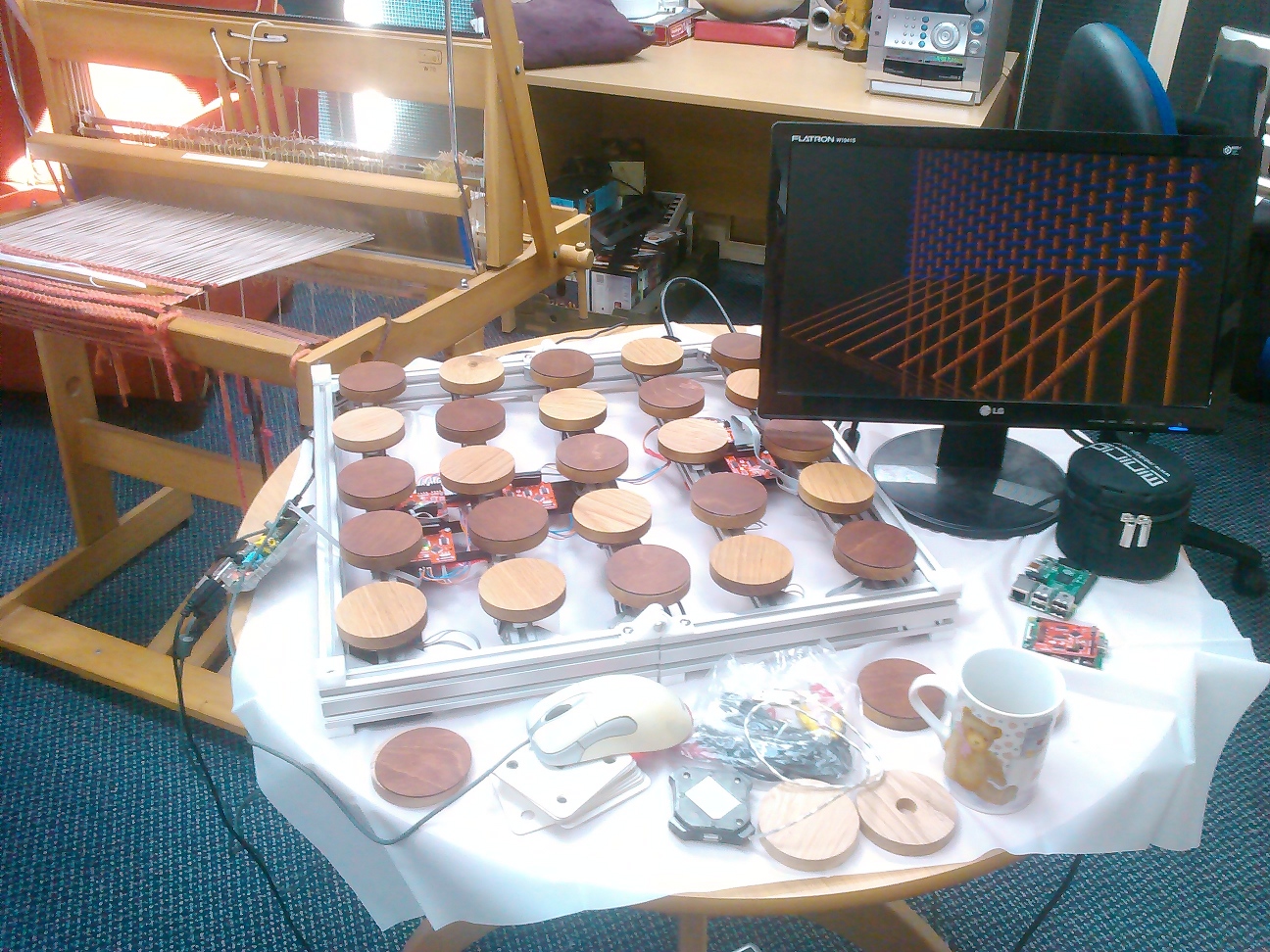Our work on weavecoding is now reaching out to other uses and projects. One is Future Thinking for Social Living, run by Magda Tyżlik-Carver and Fiona Hackney.
This research project aims to look at the relationship between wellbeing, home, making and technology and is centred on Miners Court, who provide assisted housing in Redruth in Cornwall. As well as a range of flats and accommodation, the residents have shared communal areas with a variety of activities throughout the week. Along with Christiane Berghoff, Robin Hawes and Lucie Hernandez we set up camp with a lot of materials for knitting, crochet and weaving as well as some Raspberry Pis and the all new pattern matrix tangible weavecoding device.
The Future Thinking for Social Living project is set up to research how we can think more critically about home and community, and with particular focus on the future. From discussions with the staff at Miners Court – specific issues they are interested in are how to make better use of communal spaces, and how can they get more men involved with crafts and shared activities.
I’m also interested in how we can use these settings for artists residencies – how does working with people like this affect a design process, does working in such a place – and using it as way to start conversations (rather than being too much in ‘teacher mode’) affect the people living there positively? Also the weavecoding project provides some ideas in bridging gaps, both between technology and people – but also across gender gaps, mixing textiles with electronics for example.

Here is the new magnetic pattern matrix, running the 3D Raspberry Pi warp weighted loom simulation (more on this soon!) with a nice 4 shaft loom in the background.
On Monday and Tuesday we spent a long time talking, weaving, knitting and making cups of tea of course (and a bit of time debugging magnets on my part). I’ve found helping people weave with tablets on the inkle loom is a good way to get talking, as this seems new to even people who are experienced with crafts. It also appeals to people with mathematics or design background who normally are uninterested in knitting and other crafts, and seems gender neutral perhaps for the same reasons. It also helps to talk about the history of what we are weaving with, the fact that this is an ancient technique and yet there are so many surprises – I can’t really predict to them what will happen e.g. to the pattern when we change rotation direction, and this seems to be important.
What we have yet to do (but a few weeks to experiment yet) is bridge the technology gap. Many of them have an immediate reaction of distaste to computers, as most of them have them but report that they have become unusable or feel that they are not designed well with their needs in mind. Partly the situation of having some circuit boards getting tangled up in the more familiar materials and using the Raspberry Pi simulation to show what is happening on the loom next to it is a start. One interesting thing is that neither the Pi nor the AVR boards look enough like ‘a computer’ for it to stand out too much (which also part of the Pi’s role in the classroom) – this was more so after plugging it into their large TV and getting rid of the monitor. As it gradually gets into a working state, I’d like to first try using it to demonstrate well known weaves – e.g. plain, twill and satin.
Working in this environment on the pattern matrix between weaving with different people has already had an effect on it’s design process. One initial observation resulted in reducing the magnet strength – I hadn’t even considered before that having them snap together too forcefully would be a problem for some people. Such things are obvious in these kinds of settings.

Our work on weavecoding is now reaching out to other uses and projects. One is Future Thinking for Social Living, run by Magda TyA?lik-Carver and Fiona Hackney .